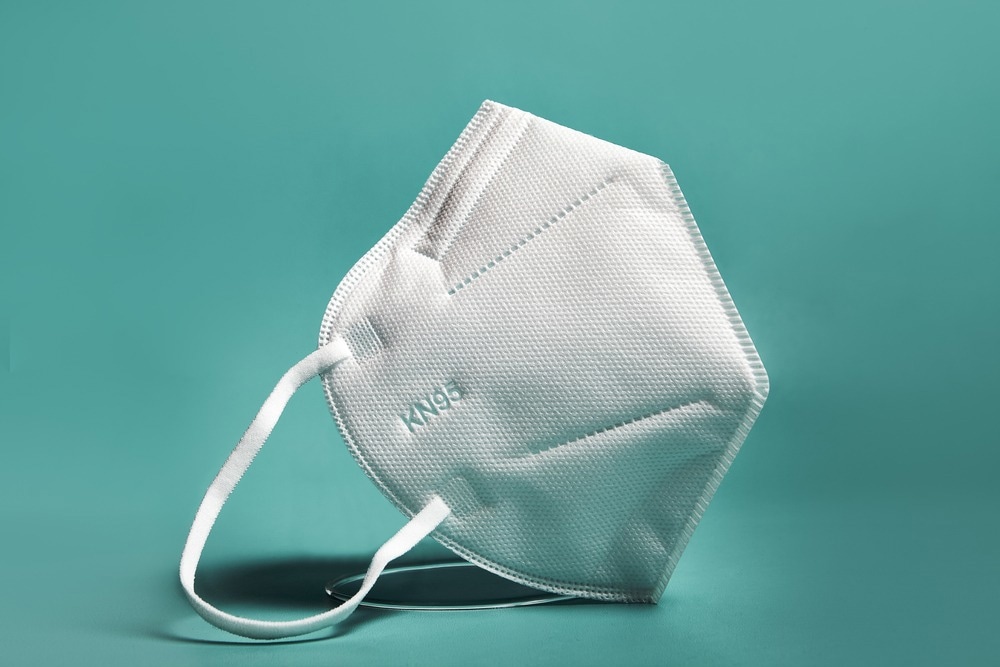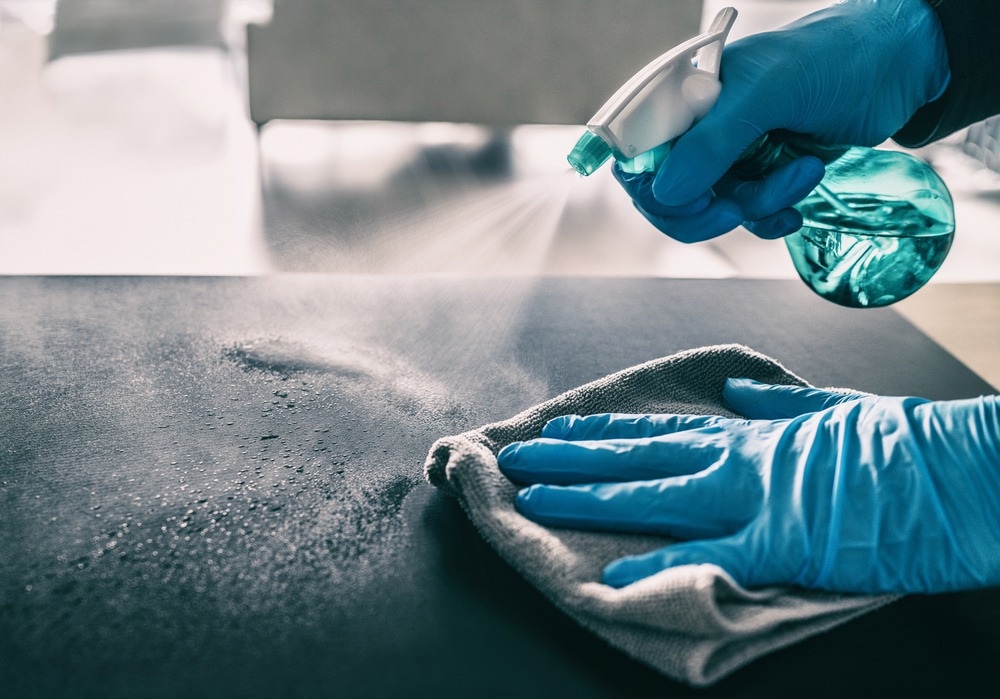Adenovirus infection, COVID-19, influenza, and other possibly fatal or food and airborne diseases are caused by viruses. Nanomaterials have been used to develop innovative antiviral nano-agents to limit viral transmission and treat viral infections because of their physical and chemical capabilities. In this article, we explore the development of antiviral nanocoatings and their applications.

Image Credit: danielmarin/Shutterstock.com
The Need for Antiviral Nanocoatings
Scientists have long developed antiviral techniques that mitigate viral destruction and provide protection to living organisms. Antiviral medications (therapeutics), antiviral packaging film, and the recently developed si-RNA-based antiviral method are examples of conventional antiviral strategies.
However, developing more effective antiviral techniques is required due to drawbacks such as sensitivity, resistance, restricted specificity, low therapeutic efficacy of antiviral medications, age, genetic predisposition, and co-morbidities.
Utilizing inorganic and metal nanoparticles for cutting-edge antiviral strategies like nanocoatings holds potential in this field.
Development and Mechanism of Antiviral Coatings
Using nanomaterials in coatings, such as silver, titanium dioxide nanoparticles and carbon nanotubes, reduces surface contamination because the coating's hydrophobic, odor-masking, and self-cleaning properties make surfaces easier to clean with less effort.
The nanocoating acts as an interface between the substrate and the environment and is only a few nanometers (nm) thick, enabling development and material functionality.
Nanocoatings are 99.99% effective against several viruses, bacteria, and molds and have been used in most products on the marketplace. Antiviral nanocoatings are thin layers of materials that have been developed at the nanoscale that possess antiviral features.
Antiviral nanocoatings can contain substances that deactivate viruses by destroying their molecular makeup or hindering their proliferation. They can reduce the threat of virus transmission by preventing virus attachment and adherence to surfaces.
They can also gradually release antiviral medicines to sustain a virucidal microenvironment over time.
Applications of Antiviral Nanocoatings
Antiviral nanocoatings for various applications, from air filters to mobile phone displays have been developed through various techniques.
Other applications include antiviral food packaging and contact surfaces for suppressing enteric viruses, health products for preventing sexually transmitted infections (STDs) and disinfection and personal protective equipment (PPE) in the healthcare industry.
Wang et al., for example, constructed a biocatalytic composite that could be applied to a range of surfaces by integrating perhydrolase (AcT) into a polydopamine (PDA) matrix.
The subsequent AcT-PDA coatings significantly lowered the infectious capacity of the SARS-CoV-2 pseudovirus in minutes. Another example is a water-borne spray-on coating consisting of functionalized macroCTA and polystyrene, which can deactivate SARS-CoV-2 (VIC01), its alpha form (B.1.1.7) and influenza A, within thirty minutes of contact by degrading viral RNA.
The significant nanoscale conformational alterations in this coating occur from collapsed (less than 100 nm) to elongated (approx 1000 nm), when viral droplets settle on the surface, promoting effective attachment along with rupturing of the viral membranes.
Antiviral Nanocoating for Commercial Masks
Researchers such as Li et al. investigated the effectiveness of commercial medical masks and N95 respirators and discovered that both enabled the penetration of viruses less than 100 nm.
Antiviral activity can be increased by covering the fabrics utilized in commercial face masks with antiviral nanocoating. Balagna et al., recently demonstrated that a commercial face mask coated with a silver nanocluster/silica composite sputtered coating exhibited significant virucidal action against SARS-CoV-2.
In 2020, Agrawal et al. developed an antiviral nanocoating, employing N9 blue silver that was modified to build nano-complexes with zinc compounds to produce a synergistic impact. It can be used as a coating on face masks and PPEs.

Image Credit: Maridav/Shutterstock.com
Antiviral Nanocoating Over Other Fabrics and Surfaces
It is crucial to incorporate self-disinfection capability into materials used in apparel, surgical dressings, beddings, and wipes. Hamouda et al. created a silver nanoparticle (AgNP) -treated cellulose-based wipe.
AgNPs' antiviral activity provided the wipe disinfecting properties and was effectively tested against MERS-CoV with 48.3% virus inhibition at 0.0625 μL. They recommend using these wipes in healthcare facilities and hospitals in the future to combat pathogenic viruses, including coronavirus.
Aside from fabrics and masks, there are additional supplies used in hospitals and other public places that must be safeguarded against the virus. They include touchable glass and metal surfaces in hospitals, schools, and public transportation, among other places.
Jana et al. developed a transparent antiviral nanocoating approach that would be appropriate for face shields, cell phone screen guards, lift buttons, doorknobs, and medical devices without altering the appearance or function of the surface.
They incorporated graphene nanoparticles (GNPs) and copper nanoparticles (CuNPs) in a poly (vinyl alcohol) (PVA)-based nanocomposite coating to provide a synergistic antiviral effect.
The compositing of nanoparticles here serves to block their agglomeration and stabilize them by changing their surface architecture, and their anti9viral activity remains unaltered after combining with PVA to make the coating transparent.
Antiviral Nanocoatings for the Food Industry
Another important application of antiviral coatings is in the food industry. This is critical because human enteroviruses, such as human noroviruses (NoVs) and hepatitis A (HAV), may trigger serious sickness if consumed. Adding antiviral ingredients to the packaging system as a layer is a strategic approach to developing antiviral packaging solutions.
Coextrusion, lamination, and other processes are used for developing multilayered packaging solutions. Antiviral materials such as metal-nanoparticle-based graphene oxide, functional carbon dots and other nanomaterial-based coatings can be employed to make antiviral food packaging.
Mayorga et al. developed an electrospun coating consisting of silver nanoparticles, polyhydroxyalkanoates, and silver nitrate, which was investigated against norovirus surrogates. Silver ions and nanoparticles could reduce norovirus surrogates (murine norovirus and feline calicivirus) in a dose-dependent manner (2.1 and 21 mg/L).
Future Outlook
With the rise of viral illnesses becoming more prevalent worldwide, nanotechnology has proven to be quite useful in producing broad-spectrum antiviral strategies. This article provides an overview of the current understanding of antiviral nanocoatings.
Reusable masks and other products modified with antiviral nanocoatings, and self-decontamination could be effective measures in the fight against viral spread. Furthermore, antiviral surface coatings that lower infections by blocking adherence or destroying pathogens with self-sanitizing capacity are thought to be the most desired for reducing virus indirect transmission.
Numerous nanomaterials have demonstrated strong antiviral properties, but further research is needed to create next-generation antiviral coatings with distinct properties to deal with potential virus outbreaks.
References and Further Reading
Srinivasan, A.& Chiome, T. (2020). “Use of antiviral nanocoating in personal protective wear,” International Journal of Health & Allied Sciences, 9(5), p. 62, doi.org/10.4103/IJHAS.IJHAS_80_20.
Dahanayake, M. H., et al. (2022). Recent breakthroughs in nanostructured antiviral coating and filtration materials: a brief review. RSC Advances, 12(26), pp. 16369–16385, doi.org/10.1039/D2RA01567F.
Rakowska, P. D., et al. (2021). Antiviral surfaces and coatings and their mechanisms of action. Communications Materials, [online] 2(1), pp. 1–19, doi.org/10.1038/s43246-021-00153-y.
Castro-Mayorga, J.L., et al. (2017). Antiviral properties of silver nanoparticles against norovirus surrogates and their efficacy in coated polyhydroxyalkanoates systems. LWT - Food Science and Technology, 79, pp. 503–510, doi.org/10.1016/J.LWT.2017.01.065.
Priyadarshi, R., et al. (2022). Antiviral Biodegradable Food Packaging and Edible Coating Materials in the COVID-19 Era: A Mini-Review. Coatings, 12(5), p. 577, doi.org/10.3390/COATINGS12050577.
Antiviral nanocoatings to be upscaled for making triple layer medical masks & N-95 respirator to combat COVID 19 | Department Of Science & Technology. Available at: https://dst.gov.in/antiviral-nano-coatings-be-upscaled-making-triple-layer-medical-masks-n-95-respirator-combat-covid (accessed Oct. 17, 2023).
Perdikaki, A. V., et al. (2018). Ion-Based Metal/Graphene Antibacterial Agents Comprising Mono-Ionic and Bi-Ionic Silver and Copper Species. Langmuir, 34(37), pp. 11156–11166, doi.org/10.1021/acs.langmuir.8b01880.
Disclaimer: The views expressed here are those of the author expressed in their private capacity and do not necessarily represent the views of AZoM.com Limited T/A AZoNetwork the owner and operator of this website. This disclaimer forms part of the Terms and conditions of use of this website.